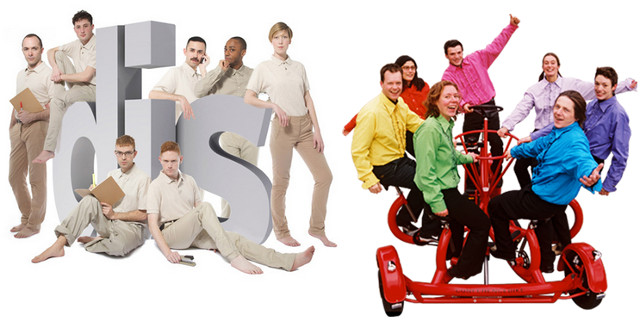systematically_oppositional twitter keeps sending me nagware popups asking for my phone number
systematically_oppositional 1-800-SATAN
systematically_oppositional they also publish my email address in large type at the top of my timeline asking me to confirm it's still current
systematically_oppositional i would love to send an electromagnetic pulse to their server and taser the company executives at the same time
hypocrisy_detector thats awfully violent for a free service you're voluntarily using
systematically_oppositional it's not free -- they've been exploiting my intellectual labor since 2008
systematically_oppositional all i ask is not to be nagged
hypocrisy_detector voluntary intellectual labor, but yeah, it's annoying
hypocrisy_detector i wish they would just acknowledge you don't want 2-factor and move on
systematically_oppositional it's not voluntary -- social media is "indispensable" to living in the modern world
systematically_oppositional and yes they will never rest until i give them more factors
Day: December 17, 2015
managementspeak lesson 002

"We are working to build a whole new way to bank" (photo of sign in lobby). Translation:
"We're giving up half our Manhattan storefront space because we can make more $$ subletting it. We're automating every customer service that hasn't already been digitized. We're moving some of our employees to another retail branch, firing some, and keeping a skeleton staff."
"internet of things" hype -- comparison of US and Japanese advertising
Worth a read (from the Naked Capitalism blog). The author compares YouTubes of US and Japanese ads for "smart" air conditioners:
Both [ads] are for products in the same sector – home [air conditioning]. And both are for products which are in the replacement or upgrade market – meaning that people almost certainly already have an existing version of the same product. So if the promoters are to be successful in getting people to buy a newer version of what they have right now, the new version must offer some quantifiable advantage. The advantage proffered in both the Daikin [Japanese] and Nest [US] products is the same – home automation and connectivity.
...
The “new and improved” element for both these products is that they are “smart” – they automate things that users either can’t do for themselves at all or can’t do very easily. But here of course is the first pitfall the manufacturers must avoid. In giving devices in your home more autonomy, you are ceding control to the device. While you may be happy with the device doing things you want it to, you definitely don’t want it doing things that are unexpected or unwelcome. This will always be a risk. So the advertising must offer a reward for that risk to offset it.
Here is where the two commercials start to diverge in their specifics – but they have the same approach which is to make an unspoken but unmistakable appeal to something a little deeper in our value systems.
In the Japanese advert, it might seem a bit too subtle to a western viewer, but a Japanese person will get the message straight away. At the start of the ad, the child is shown – and talks about – how her parents took care of her as a child. The woman then says – explicitly – “in the same spirit, I bought.”. In Japan, there is a profound and, even today, very strong, concept called in Japanese “giri” which isn’t easily translatable into a single word but can be thought of as a combination of “duty” and “obligation”. People feel (and do still act out of) a sense of responsibility to others. If someone has done something for you, you have an obligation back to the person who did it. The woman’s parents looked after her when she was younger and now she has to look after her parents now they are older...
Turning to the Nest advertisement...
What positively slaps me on the face about the Nest U.S. advertising is that it is blatantly money- and self- orientated. Certainly compared to the Japanese equivalent – there is no appeal to family responsibilities or responsibilities to broader society. There is, literally, money being scattered around by big business, consumers’ hands are shown, again – verbatim – grabbing for that dough. The reward is dollars, pure and simple. A worse fear put into viewers’ minds is, there could be dollars being handed out and someone else is getting your share. As a European, it strikes me as crass and unseemly – this sort of ad style would only be run by a low-rent discount operator hawking cheap rubbish. And yet here is the same approach for an aspirational high-end product in the U.S. What does that say about how the manufacturer views its customers and worse, if that were possible, what does that say about what is assumed to motivate Americans? ...
Update: Reader cheseball thinks this is an apples-and-oranges comparison because the Nest ad is aimed at a more facts-and-figures-discerning web audience and the Japanese ad is for TV-watching schmoes. In the American TV ad for Nest [YouTube], the pitch is also to family values, as in, this product will help you be less of a typical American stressed-out homeowner dealing with 2.5 kids and an atmosphere of total chaos.
"Clive" could have made better choices for his comparison but to me the point is that all the advertising approaches are essentially deceptive: the internet of things is one more thing we don't need, individually or societally.


